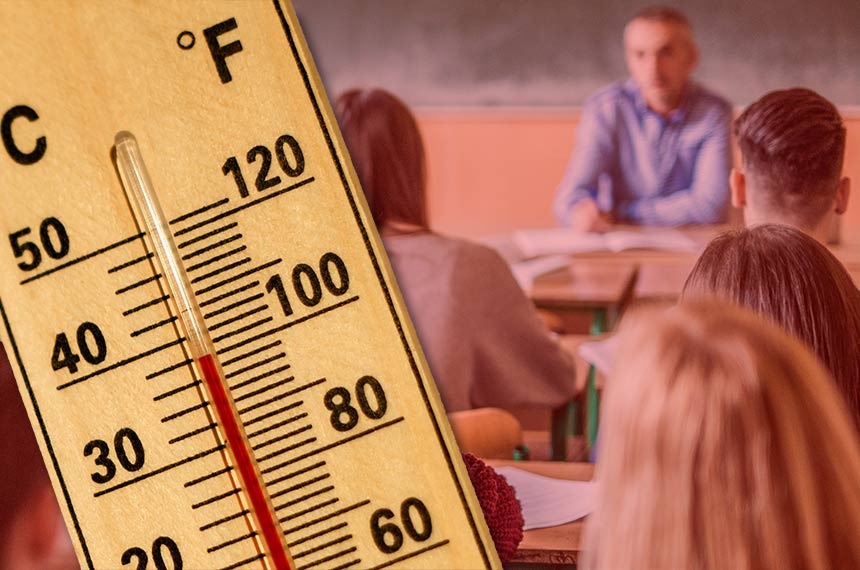
I have a good friend that teaches in an Idaho K12 school. We’ve had some warm days this last week as school started. Our house, a 1950’s model with no AC got up to 85 degrees a couple afternoons. I knew his school was of similar vintage, so I inquired about the classroom temperature.
He shook his head. “The day starts at about 80, but we’re above 90 by the afternoon.”
“No way.”
“We can’t open the windows at night, we’re on the ground floor and it wouldn’t be secure. And the classroom is on the southwest corner of the building. The whole west wall is windows. Even with the shades it just bakes.”
Our governor and legislature are congratulating themselves on sending more money to schools with this special session. Brad never ceases to mention how he has devoted more funding to schools.
But what about the buildings?
The Idaho legislature was found to be violating its Constitutional duty to fund school facilities in 2005. Since then, they have found a way to fund charter school facilities, albeit meagerly.
Look across the Idaho K12 facilities landscape. You will see new schools; you will see old schools. You might see condemned schools. The age old “good enough for my grandpa” method to fund schools was local school district bond elections. The local community would see the need, agree to raise their property taxes so they could pay off the bond that would fund new construction. Or they could run a levy to fix up the rusty boiler.
But property taxes aren’t popular, and the legislature has kept the bar high for bond passage. A district needs 66 and 2/3rds of voters to agree to shoulder the debt.
Read the tally of recent failures. Here’s a tearjerker: Vallivue District got 66% support but failed by a few votes.
It’s time our legislative leaders quit playing social warrior games chasing books out of libraries and beating the CRT drum and got down to brass tacks. Please, move our state into the 21st century about funding school facilities.
Charter schools are public schools. They aren’t burdened with the borrowing requirement of school districts. They get money straight from our state coffers (income and sales tax revenue) to fund their buildings. Everyone agrees the funding is inadequate. There aren’t any charter school Taj Mahals. But their method of getting funding isn’t capricious, it’s reliable. And it doesn’t rely on the extremely variable regional property tax base.
I must disclose, when the scheme for funding charter school facilities came before the legislature in 2012, I voted against it. Not because I didn’t think it was a clear need. I just thought it was half baked. If we are going to fund one set of school buildings from general fund dollars, why not all?
This lousy solution has emphasized the difference between charter schools without a taxing district, and district schools. But it’s kept both struggling.
I know the Idaho Freedom Foundation thinks government should not be in the business of education. Maybe they will organize an initiative to remove Article IX, Section 1 from the Idaho Constitution:
The stability of a republican form of government depending mainly upon the intelligence of the people, it shall be the duty of the legislature of Idaho, to establish and maintain a general, uniform and thorough system of public, free common schools.
But I doubt they have the time and energy for such an arduous task.
Instead, maybe the School Boards Association, or the School Administrators Association, or a group of frustrated parents will decide to sue the legislature for not performing their Constitutional duty. Heck, the legislature has funded their lawyers’ budgets.
In the meantime, another heat wave and our students might get fully baked.
